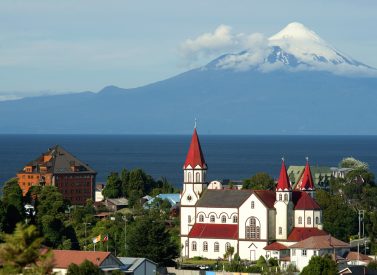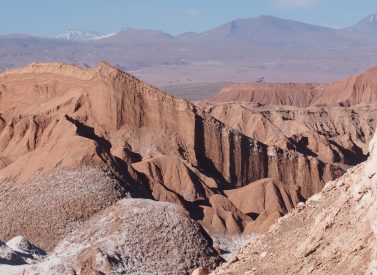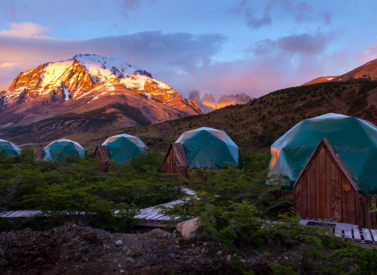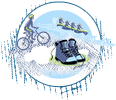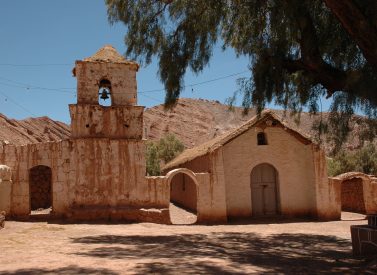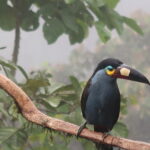
Wine tour, Santa Cruz, Colchagua Valley, Chile
Explore the vineyards and taste the wines around Santa Cruz in the Colchagua Valley
The Colchagua Valley, a 3 hour drive south of Santiago, is in the heart of Chile’s wine country.
This tour gives you the opportunity to learn about the the winemaking process as well as tasting some of the country’s finest wines – all in situ. Learn about the traditional wine making methods as well as seeing innovations such as gravitational vineyards influenced by Feng Shui.
All of these are but a short drive from your hotel base in the charming town of Santa Cruz.
Additionally, you will have the opportunity to cycle around the vines in a beautiful setting and enjoy fine food as well as wine.
You will marvel at the different styles of the wineries, from the traditional colonial to the ground breaking eco-friendly modern.
More on Wine tour
Some of the wineries you may visit are:
Viu Manent: Traditional winery founded in 1935. This is a family owned winery and where you will have the opportunity of a 5 km cycle on the vineyards flat roads and learn more about viticulture.
Neyen Vineyard: Here old blends with new. The vines date back to the 19th century, the wine processes are 21st century and your tasting will take place in the cellar dating back to 1890.
Montes: This winery came to be in 1989. It is a ground breaking innovative winery who have even planted a vineyard on the island of Mechuque in Chilean Patagonia – at a latitude never before attempted.
Santa Cruz
The town of Santa Cruz, where you will be based, is also the heart of Chile’s central region traditions. Here you may well see the Chilean Huaso (cowboy) riding through town on horseback in traditional dress.
If you have time, a must is a visit to the Colchagua Museum which has an incredible array of artefacts from Pre Columbian times to modern day. Your will even see the cage which was used to rescue the trapped 33 miners which made world wide news in 2010.
Trip Highlights
Print Share Download as PDF-
Visit world renowned wineries
-
Taste incredible wines in situ
-
Explore the heart of Chile's wine country
-
Get a taste of Chile's rural traditions
Incredible wine, experience, and scenery!
Alan, 2018
Full Itinerary
Day 1: Transfer Santiago - Santa Cruz, Viu Manent winery visit, hotel
You will be picked up at your hotel in Santiago in the morning by your Spanish speaking driver. Crossing the city you will then head south along the Panamerican highway. You will be flanked on the left by the Andes Mountains as well as fruit producing fields. After 130 kms / about two hours you will leave the highway heading for Santa Cruz, the main town in the Colchagua Valley. The drive should take a little over 3 hours.
Santa Cruz is a town in central Chile’s Colchagua Valley with a population of around 35,000. It’s known for its colonial architecture and surrounding wineries. Other attractions are the Colchagua Museum which displays pre-Columbian art, Andean textiles and archaeological objects. The restored 19th-century Santa Cruz Church faces the square. The square hosts the city’s annual Fiesta de la Vendimia, celebrating the region’s grape harvest.
Check in to the hotel.
In the afternoon you will have an entertaining guided tour on bicycles (electric or conventional) at Viu Manent traditional vineyard.
You will be picked up at your hotel and driven to the Viu Manent winery.
The Viu Manent was founded in 1935 when the Catalonian immigrant Miguel Viu-García and his two sons Agustín and Miguel Viu-Manent founded Bodegas Viu in Santiago de Chile. They bottled and sold wine on the local market under the “Vinos Viu” brand. The winery is now in the hands of the third generation, led by Jose Miguel Viu. Their best known lines are Gran Reserva, Secreto and Premium .
You’ll ride your bike through the vineyards enjoying beautiful views of the Andes mountain range and the Apalta hills. During the 5-kilometre flat ride on the vineyard private roads, you will have the opportunity to see the historic Malbec sheds and learn more about viticulture.
At the end of the tour, you visit the La Llavería Visitor Center and enjoy a relaxed tasting of 3 wines on the terrace with snacks.
Return to the hotel in Santa Cruz.
Overnight in Hotel Santa Cruz.
Day 2: Visit Neyen and Montes wineries, hotel (B)
Breakfast at the hotel.
In the morning, you make a visit to the Neyen vineyard.
The vineyard is located on the old terraces of the Tinguiririca river in Apalta. This is a beautiful location, wedged between where the Andes Mountains and Coastal Range unite to form a stunning half-moon formation.
Rich in history, the Cabernet Sauvignon vines were first planted in 1889, moving on to include Carmenere in 1936. These original, own-rooted pre-phylloxera vines from France continue to produce high quality fruit year after year.
Owing to age and a deep root system, the vines require minimal intervention. Granitic, volcanic soils from the mountains, along with river’s clay loam soils, allow for natural drainage. These particular conditions, together with a semi-arid Mediterranean climate, result in a slow ripening of the grapes, achieving balance and elegance.
The vineyard practice organic farming leading to healthy soils and pure fruit. They strive to work in tune with the estate’s rich biodiversity, helping to maintain a balanced eco system. The estate houses Apalta’s oldest bodega.. Its adobe walls, constructed in 1890, stand alongside a new state-of-the art facility that blends in beautifully with Neyen’s landscapes. The winemaking process takes place in a modern bodega, with small, gravity-flow tanks and native fermentation. The transformation and evolution of the wine occurs in the aging process, during which French barrels are used to encourage a slow and continuous interaction between wine, oxygen and oak, evolving into smooth, balanced wines.
Lunch not included.
We advise you to have lunch at Fuegos de Apalta restaurant, located at Montes vineyard. This is the restaurant of the fire-loving Argentine chef Francis Mallmann. Take your pick from meat, fish, and vegetables prepared in a specially designed dome located in the centre of the restaurant.
During the afternoon, you will visit the Montes vineyard, guarded by its famous angels. It is well known for its impressive and innovative architecture, this winery can be found right in the centre of Apalta. The Montes Alpha Cabernet Sauvignon is the most popular premium wine produced here.
Montes started life in 1987 as the dream of four friends – Alfredo Vidaurre, Douglas Murray, Pedro Grand and Aurelio Montes. With the Andes on one side, proximity to the sea on the other this part of Chile has perfect conditions for making high-quality wines. Many great wines later (including the flagships Purple Angel, Folly and Montes Alpha) Viña Montes’ success has paved the way for a plethora of ground breaking projects. Most recently, the planting of a new vineyard on the island of Mechuque in Chile’s extreme south – at a latitude never before attempted.
Enjoy the view from the Mirador del Ángel, overlooking the vineyard.
One is likely to feel a striking sense of peace when visiting the beautiful Montes winery. Maybe it’s the Finca de Apalta winery itself, surrounded by Carmenère vineyards and constructed in 2004 using the principles of feng shui. Maybe it’s the vibrations emanating from the barrel room, where Aurelio Montes’s wines mature to the sound of Gregorian chant. Maybe it’s the heavenly view of the surrounding Apalta Valley and the 400-odd hectares of native forest owned and protected by Montes.
First, you will walk through its beautiful vineyards, with a great view of the Valley.
You visit its mystical gravitational vineyards and winery influenced by the harmony of Feng Shui and where Premium and Ultra Premium wines are made: Montes Alpha M, Montes Folly, Purple Angel and Montes Alpha.
Then, you visit the Barrel Room, where their best wines rest and mature accompanied by Gregorian Songs.
At the end of the visit, enjoy a tasting of 4 wines with explanations from an expert.
Return to the hotel in Santa Cruz.
Overnight in Hotel Santa Cruz.
Day 3: Transfer to Santiago (B)
Breakfast at the hotel.
For your last morning, we suggest a visit to the world class museum.
Allow several hours to wander through this well organised, informative (English audio) collection covering the history of Chile, from fossils to modern times.
Colchagua Museum belongs to the Cardoen Foundation, it was inaugurated in 1995 by its president Carlos Cardoen Cornejo.
The museum is made up of:
8 main rooms:
An evolutionary journey from the beginning of life 600 million years ago; man and the American mega fauna; the development of pre-Hispanic cultures; the arrival of the European and the formation of Chile; ending with the modernity of the twentieth century.
9 thematic pavilions:
Collections that delve into specific topics and knowledge. One particularly informative and emotional exhibit deals with the rescue of 33 miners trapped 690 meters below the surface for 69 days in 2010.
The museum was recognized by Independent newspaper in the UK in 2011 as “Six of the best people museums – One of the most astonishing rescues of recent times – of the 33 miners trapped for more than two months in the San Jose mine – is commemorated in this new gallery opened to mark the first anniversary of the rescue. The dedicated room at the Museo de Colchagua in Santa Cruz tells the story of the miners’ ordeal. Three of them have contributed to the exhibition which, as well as offering an insight into the their working life, focuses on the rescue operation. Testimonials from families who lived at “Camp Hope” are complemented by copies of the three rescue plans, details of the technology and strategies used, and an assessment of the event’s global impact.”
Pick up at the hotel and head back to Santiago.
Prices From $1,122 / £912 per person
What's Included?
Accommodation in hotel with breakfast, Excursions and transfers in private service (driver only), Entrance tickets to the sites mentioned in the description, Meals mentioned as included in the description.
What's Not Included?
Flights, services not mentioned, extras, tips.
Accommodation
Comfortable 4 star accommodation with en suite facilities.
Tour Staff
Professional drivers for your transfers and English speaking expert guides at the wineries.
Meals
Breakfast is included with your hotel accommodation. You will have lunch options (not included) on your excursions. Santa Cruz offers a variety of nice restaurants to choose from for your dinner.
Activity Level
This is an easy programme and no great exertions apply. The most challenging may be the strong sunshine in summer – hat and sunscreen!
Practical Information
An introduction to Chile
Chile is the land of contrasts, from verdant vineyards to driest desert, deep fjords and towering glaciated volcanoes.
A narrow but incredibly long, snake-like country, Chile’s unusual geography features more than 5,000km of South Pacific Ocean coast. The country is almost 4,400km long but barely more than 160km at its widest.
It is best divided into general regions, all of which offer spectacular landscapes and identities of their own.
This variety means Chile is the land where almost every activity is possible. Hiking, biking, rafting and kayaking.
Or climbing, cruising, fishing, horse riding, wine tasting.
Or simply eating great food, relaxing and exploring.
Geography of Chile
Patagonia
Trekking heaven. Paine National Park lies in Patagonia and features some of the best trekking in South America. With no altitude worries here, hikers enjoy an unrivalled mix of access to wild flora and fauna that exists in this massif. It is at once windswept, and then balmy. Paine National Park is a must see for walkers visiting South America.
Northern Patagonia is the least densely populated part of the country – spectacular virgin scenery make this a hidden gem and superb area for trekking, boating and horse riding.
And that’s before you think about possibly cruising through fjords, or kayaking them, flying to Antartica or staying at a working hacienda.
Easter Island
Iconic, Easter Island is an archaeological treasure. Here you will find the famous Moai stone statues, as well as caves and rocks decorated with etched petroglyphs and painted pictographs.
Northern Chile
Northern Chile features the Atacama, the driest desert with the clearest skies in the world, is alive with active volcanoes replete with spitting geysers mixed with archaeological wonders and fantastic rock formations.
Central Chile is the heart of Chile and includes the capital Santiago. With its Mediterranean climate of hot dry summers and mild wet winters, this central valley produces some of South America’s finest wines, Colchagua Valley to name but one.
Here, the Andean mountain chain soars more than 6,000m above sea level. Chile’s traditional symbols such as huaso (cowboy) and cueca (national dance) originate here, an area which is rich in agriculture and produces most of Chile’s export fruit.
In winter, skiers are attracted to this tasting the promise of some fabulous snow on the huge peaks which overlook Santiago.
Southern Chile and the Lake District
Lush and verdant, The Lake District area is the place to climb snow-capped volcanoes by day while relaxing next to stunning glacial lakes by evening. You can walk, bike, raft, cruise and drive your way around this beautiful region.
Central, southern and Patagonia Andes all present different challenges to mountaineers and trekkers. Options are varied in the central Andes with many of the Patagonian peaks remaining unexplored and unsummitted.
Kit list
Good kit is vital for every trip.
Book with Andean Trails and get 15% off Páramo’s fantastic ethical and high performance outdoor gear.
Overview
Chile has a wide range of climates from arid deserts to bracingly cold Patagonia.
When planning for these changeable climatic conditions you will encounter across Chile, layering is the most practical and versatile clothing system.
The sun is very strong throughout the country, so good sun cream, a hat and sunglasses are vital.
It can also get very cold at night time especially in the mountains. Jumpers, fleeces and warms hats – which you can buy there – are also essential.
Give plenty of thought to kit selection, and try to keep weight down.
Below is a more detailed guide.
Detailed kit list
- Medium weight parka or a down jacket.
- Waterproof jacket and trousers. The jacket needs to be water proof and roomy. Side-zip pants are recommended.
- 2-3 long-sleeve shirts – no cotton
- 2-3 short-sleeve T-shirts – no cotton
- 2 pair of hiking trousers- cotton or synthetic material (no jeans)
- 1 fleece or sweat trousers (for cold evenings)
- 2 pair hiking shorts
- Long thermals – synthetic or wool – light to medium weight top & bottoms.
- 2-3 mid-weight (wool or synthetic) socks.
- 2-3 liner socks if needed
- Athletic-type socks, several pairs, city use
- Hiking boots that are waterproof and well broken-in.
- Running/tennis shoes or sandals are very comfortable when you are in cities
- 1 lightweight wool sweater or windproof fleece
- 1 wool or synthetic warm hat.
- 1 light sun hat with a wide brim.
- 1 pair of medium-weight wool or synthetic gloves
- Broad-brimmed sunhat, essential.
- Sunglasses with UV filter.
- Scarf for cold.
- Bandanna – to protect neck from strong sun.
- Daypack (at least 30 litres). Comfortable and with waterproof lining or cover.
- Water bottle (2 litres approx.) & purification tablets.
- Personal first-aid kit to include: painkillers, plasters (band-aids), moleskin, anti-biotic cream, general antibiotics (ask your GP), after-bite (tiger balm), anti-diarrhoea tablets, throat lozenges, re-hydration salts & personal medication.
- Insect repellent (just in case)
- Towel & wash-kit.
- Wet Wipes/antiseptic hand-wash cream.
- Sunscreen (factor 30+) and lip salve.
- Head-lamp (plus spare bulb and batteries).
- Penknife.
- Travel alarm clock.
- Plastic bags – ‘Zip-loc’ & tough bin liners.
- Camera and film / memory cards (take at least twice the amount you think you will need!).
- Book, e-book, mp3 player/ipod or other to help pass the time.
- Binoculars.
- Spanish/English phrasebook.
- Extra snacks i.e. cereal bars or favourite chocolate bars.
Miscellaneous others
- Money belt.
- Passport.
- U.S. dollars cash, mixed-denomination notes, undamaged and unmarked.
- ATM cash/credit card.
- Any inoculation certificates.
- Personal & medical insurance certificates.
- Presents e.g. Postcards from home.
- Comfortable clothes for travel, smart clothes for night life, especially in big cities.
Weather in Chile
Chile’s climate varies greatly, owing to its sheer length, variation of terrain and varying altitudes and latitudes.
Lake District and Patagonia
In the south of Chile, here temperatures drop a little compared to the rest of Chile.
It can be better to go in the Austral summer (Oct-March). Daylight hours are much longer at this time, with Nov-Feb being popular times to visit. October and March can be very colourful and vivid with less visitors, but weather can be more blustery.
In Patagonia, the weather is, putting it mildly, variable, and variable on a daily basis. It is usually cool and windy all year round but seldom does the temperature fall below freezing point. Some days start with snow and end in balmy sunshine. It is always interesting, and can range from 10°C-20°C in the summer, although the wind can make it feel chilly.
The vast unbroken stretch of ocean to the west and south of the South American continent leaves the Patagonian Andes very exposed to the saturated winds that circle the Antarctic landmass. Also the South Patagonia Ice field influence makes the weather hard to predict. In spring or early summer fine weather may deteriorate almost without warning, bringing rains and eventually snow. Even in summer (Dec-Mar) you should come prepared to find cold, strong winds (up to 130 km/hr) and rainfalls. The summer’s average temperature is 11ºC/52ºF (24ºC max, 2ºC min).
Winter visits to these southern areas are possible, but many hotels close and not all trips are possible. Daylight hours can be very short, but the lack of visitors can greatly improve chances of seeing wildlife in parks such as Paine.
The Lake District’s temperate climate can be said to resemble that of the UK, with rain possible but also enjoying long spells of fine, fresh weather in the summer (Oct-March).
Easter Island
Although sub-tropical and essentially a year-round destination, Dec-Feb are the most popular times to visit Easter Island as it is summer there and temperatures average 24°C. There can be colder days and it can be humid too.
The winter months (Jun-Oct) on Easter Island are not overly cold, but they can be cool. The average low temperature is 16°C but there is usually a wind at this time of year that makes the temperature feel cooler than it really is.
The wind rarely stops blowing at this time of year.
Northern Chile
The north of the country lies in the tropical zone, but in the main is desert. It is dry and sunny all year round, but does get cold at night time in the high altitude areas.
In winter (June-Aug) the average daytime temperature is 22°C (72°F) and by night 4°C (39°F), descending to -2°C (28°F) in extreme cases.
During summer (Jan-Mar) the temperature fluctuates between 27°C (81°F) and a minimum of 16°C (61°F) at night, reaching maximums of 32°C (90°F), with occasional showers.
Central Valley
The wine growers love the central valley, which has a suitable Mediterranean climate of hot dry summers (Nov-March).
Then, temperatures range from 17°C in the evening and can go up to 30°C inland. It is cooler during the day on the coast.
During winter (May-Sept), which is essentially mild and wet, temperatures inland can vary from 5°C to 18°C during the day, and a bit warmer on the coast.
Autumn (Mar-April) and Spring (Oct-Nov) are lovely times to visit, although hotels in Santiago can book out in March, October and November, as it is conference season.
ATOL holiday protection
Andean Trails has 25 years of experience of putting together the best South America holidays.
We pay a fee to the CAA for every licensable passenger we book since we hold an Air Travel Organiser’s Licence granted by the Civil Aviation Authority. In the unlikely event of our insolvency, the CAA will ensure that you are not stranded abroad and will arrange to refund any money you have paid to us for an advance booking.
We also offer ATOL (Civil Aviation Authority) protected holidays to give our customers peace of mind when booking and travelling.
When you buy an ATOL protected air holiday package from Andean Trails Ltd you will receive a Confirmation Invoice from us confirming your arrangements and your protection under our Air Travel Organiser’s Licence number 6275.
You can read more about ATOL, who is covered and what protections you have if not ATOL-covered, on our ATOL page.
What is ATOL?
The CAA’s ATOL scheme offers protection to your money and your holiday if you book with us. Not everybody is covered (see ‘Who is covered?’ for more), as you must purchase an ‘air package holiday’ with Andean Trails to be protected.
And ‘air package holiday’ is defined as including a flight and some ground services (hotel, transfer, trek etc). This is also known as an ‘ATOL-protected holiday’.
Who is covered?
To be covered by ATOL, you must book a flight and some ground services with us and be from the UK. If you are from the UK and only book ground services and no flights, you are not covered by ATOL (see below for more on how non-ATOL clients are covered).
If you are outside the UK and buy flights with us, you will be ATOL protected IF any of the flights booked with Andean Trails touches/stops in the UK at any point during your holiday package booked with us.
If you buy your flights elsewhere, please check with that agent if you are ATOL protected. Be careful with online flight purchases and make sure you know what protection you have, if any, before paying for flights.
Not all holiday or travel services offered and sold by us will be protected by the ATOL scheme. Please ask us to confirm what protection may apply to your booking.
For land only holidays not involving any air travel, in accordance with “The Package Travel, Package Holidays and Package Tours Regulations 1992”, all UK passengers booking with Andean Trails Ltd. are fully protected for the initial deposit and subsequently the balance of all money paid to us, arising from cancellation or curtailment of travel arrangements due to the insolvency of Andean Trails.
I’m not ATOL covered, what protection do I have?
If you are not ATOL covered, any payments you make to us go to a Trust account.
We can only access this money once your tour has been completed, meaning that if anything happens to Andean Trails Limited while you are on holiday, then your money is secure and you can either complete the trip or be able to make it home.
If you pay for your holiday with a credit card, some offer payment protection – please check with your cardholder.
You also should have cancellation protection written into your insurance (which we recommend you have at the time of booking) in case you need to cancel.
Chile Lake District
The Chilean Lake district is an area of snow capped volcanoes that overlooks pristine lakes surrounded by forests and rolling countryside.
The Northern gateway is Temuco Airport. A short drive is Villarrica Lake overlooked by the volcano of the same name. The monkey puzzle tree is autochthonous to the region and can be found all over particularly in Conguillio National park.
The town of Pucon is a great base from which to explore the nearby National parks, hot springs, Mapuche indigenous settlements and for the more adventurous rafting, canopy, trekking and climbing.
In the middle of the region you will find the private Huilo Huilo Biological Reserve, a protected area of Patagonian cold rain forest.
The Southern sector, whose gateway is Puerto Montt, is dominated by Lake Llanquihue and the conical Osorno Volcano.
A popular base is the town of Puerto Varas on the lake shore from where one can visit the local beauty spots or set off on adventures that include biking, kayak, trekking, rafting and much more.
This area combines very well with the Argentine Lake district and the towns of Bariloche and San Martin de Los Andes.
Chile, Atacama desert
The Atacama desert covers the northern quarter of Chile.
Said to be the driest in the world it is a melting pot of earthy tones ( red, yellow, purples, browns etc ), amazing rock formations, stunning mountains and volcanoes, flamingo speckled salt flats and some of the clearest skies on the planet.
San Pedro de Atacama is the ideal base to explore the nearby geysers, hot springs, salt flats, lakes, and at night be amazed by the star studded skies.
Those after adventure can pass the time trekking, biking, horse riding and exploring.
For a bit of culture the pre Columbian museum, colonial churches and pre Columbian archaeological sites will keep one fascinated and for the nature enthusiast the scenery, wildlife and environment won’t disappoint.
Chilean Patagonia
Chilean Patagonia is a pristine wilderness of fjords, glaciers, plains, mountains and forests.
Southern Patagonia’s main attraction is the Torres del Paine National park. The granite spires attract many visitors to what some have called the 8th Wonder of the World. The park is a trekkers paradise with two classic treks, the Paine W and the Paine Circuit.
Northern Patagonia, the Aysen region, is one of the least populated parts of the country and is blessed with spectacular countryside.
The main airport is Balmaceda near the city of Coyhaique and must see places include Lake General Carrera and the Marble Caves, The San Rafael Glacier, the Quelat Hanging Glacier as well as driving the Austral Road.
The Futaleufu River is a must for white water enthusiasts.
The region also offers great horseback opportunities as well as kayaking ones. Nature enthusiasts can admire the impressive scenery, imposing glaciers and fascinating wildlife and flora.
Aysen, Chile
The Aysen region is one of the great undiscovered destinations of Chilean Patagonia.
Here you will find the world renowned white-water of the Futaleufu river, the marble caves on Lake General Carrera, the San Rafael Glacier, the Quelat Hanging Glacier and stunning scenery.
This part of the country is the least densely populated, so if you want to get away from the crowds this is the place to come.
Access has always been difficult to the region – the principal airport Balmaceda and it was only opened up less than 30 years ago, with the construction of the Austral Road from north to south.
Central Coast of Chile
The central coast is a rugged coastline very reminiscent of California – here you will find a string of small fishing coves, holiday towns and cities.
The ramshackle city of Valparaiso, with its colourful houses perched on the hills overlooking the bay, is a cultural icon, with its Museum home of Pablo Neruda, the Chilean Nobel prize-winning poet.
The coastal town of Zapallar is a great place to get away from it all and recharge the batteries.
The Humboldt current means cold water temperatures and currents that are not conducive to sea swimming, but does provide some of the best seafood in the world.
There are plenty of seabirds, including pelicans, and seals as well as sea lions.
Puerto Natales, Chile
Puerto Natales has the feel of a small frontier town.
Located on the banks of the Last Hope Sound this town had its origins in the shipping out of lamb from the local estancias.
Now it is the gateway to the Torres del Paine National Park and boasts an impressive selection of accommodation and restaurants.
Nearby attractions include the Milodon Cave and a full day sailing tour to the Balmaceda and Serrano Glaciers.
If you have time it’s worth trekking to the top of the nearby Dorotea hill for a spectacular view of the surrounding country side.
Santiago, Chile
Santiago, Chile’s vibrant capital sits in the middle of this thin long country flanked by some of the highest peaks of the Andes.
The city reflects the prosperity of the Chilean economy with a modern architecture particularly in the east of the city.
However there is still plenty for traditionalist to explore in the centre of the city including the Moneda Palace, Cathedral, Central Market with its array of fish restaurants and the pre-Columbian Museum.
There are lots of day trips nearby, from vineyard visits to Valparaiso, making Santiago a great base from which to explore.
Torres del Paine National Park, Chile
The granite spires of Chile’s Torres del Paine National Park are one of the great draws to Patagonia.
The Horns of Paine and the Towers of Paine look down on a network of valleys and lakes punctured by the odd glacier, which are a trekker’s paradise.
There are two classic treks, the Paine W and the more challenging Paine Circuit.
As well as the spectacular scenery the flora and fauna are great attractions and you will find many herds of guanacos as well as rheas, the odd Pudu – a rare miniature deer.
And if you are lucky, even a puma.
Vineyards of Chile
Chile is home to world famous wines and vineyards.
Its wine country surrounds the Metropolitan region of the capital, Santiago, making visits easy.
Many wineries can be visited as day trips from Santiago or there is the option to stay in a winery or hotel in the wine country.
The Colchagua Valley, a 3-hour drive from the city, has become a popular destination with a good offer of hotels in and around the town of Santa Cruz.
There are opportunities for visits to the wineries with tours of the production facilities and tastings. Mountain bike and horse back rides are also an option.
This part of Chile’s is also the heartland of Chiles rural traditions and the Chilean Huaso – cowboy and its traditional dances and music.
Prices From $1,122 / £912 per person
Price based on two people sharing a twin/double room.
Longer/shorter tours available, please ask.
Single supplement applies.


Dates & Prices
Prices From $1,122 / £912 per person
Price based on two people sharing a twin/double room.
Longer/shorter tours available, please ask.
Single supplement applies.
Can’t find what you’re looking for? Get in Touch
+44 (0)131 378 5593
+44 (0)131 554 6025



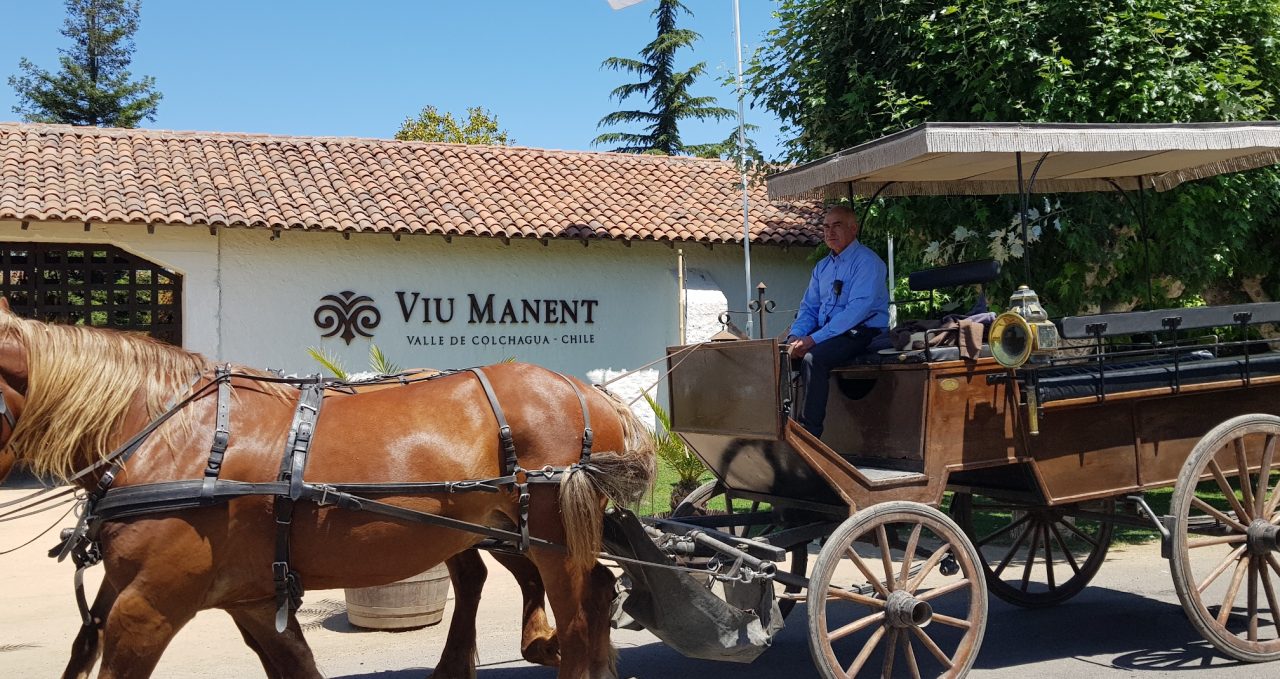
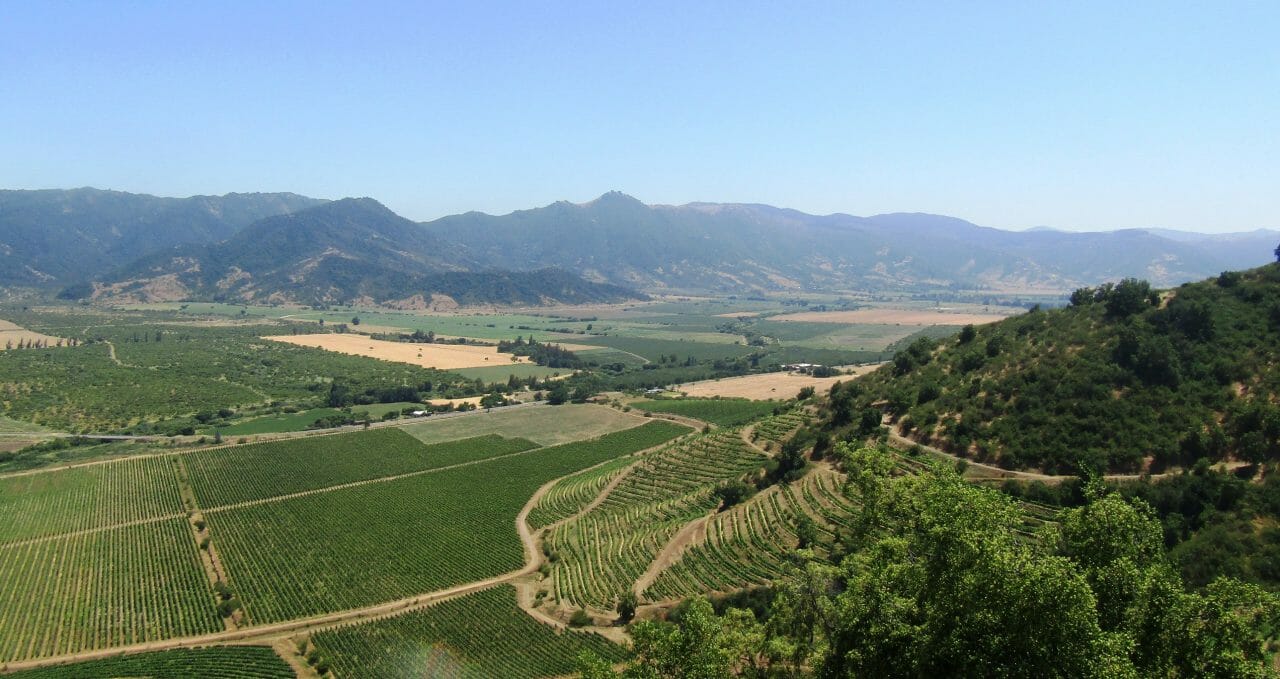
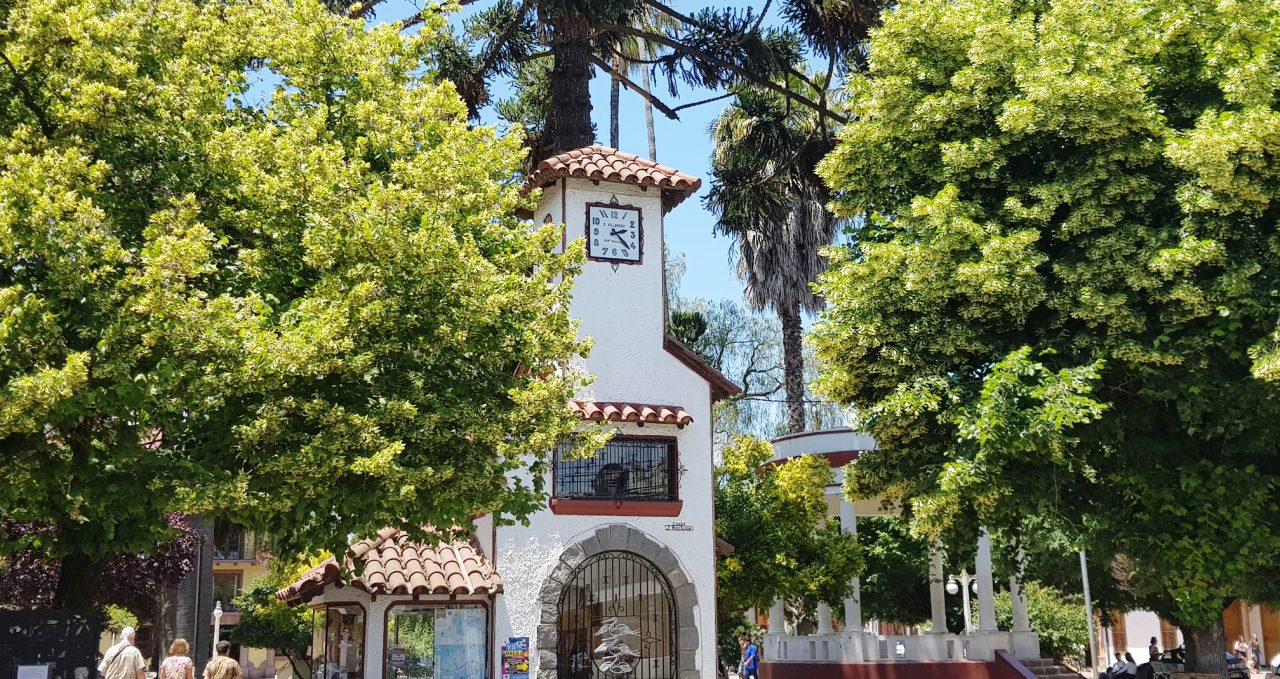
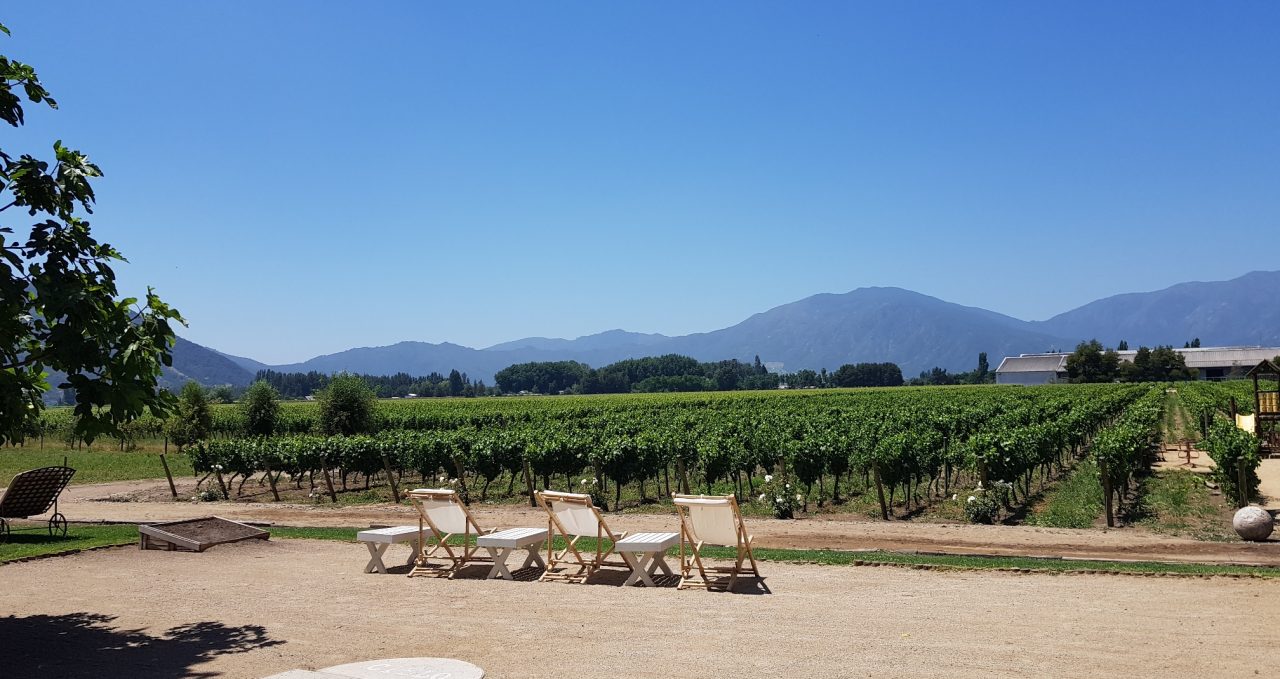
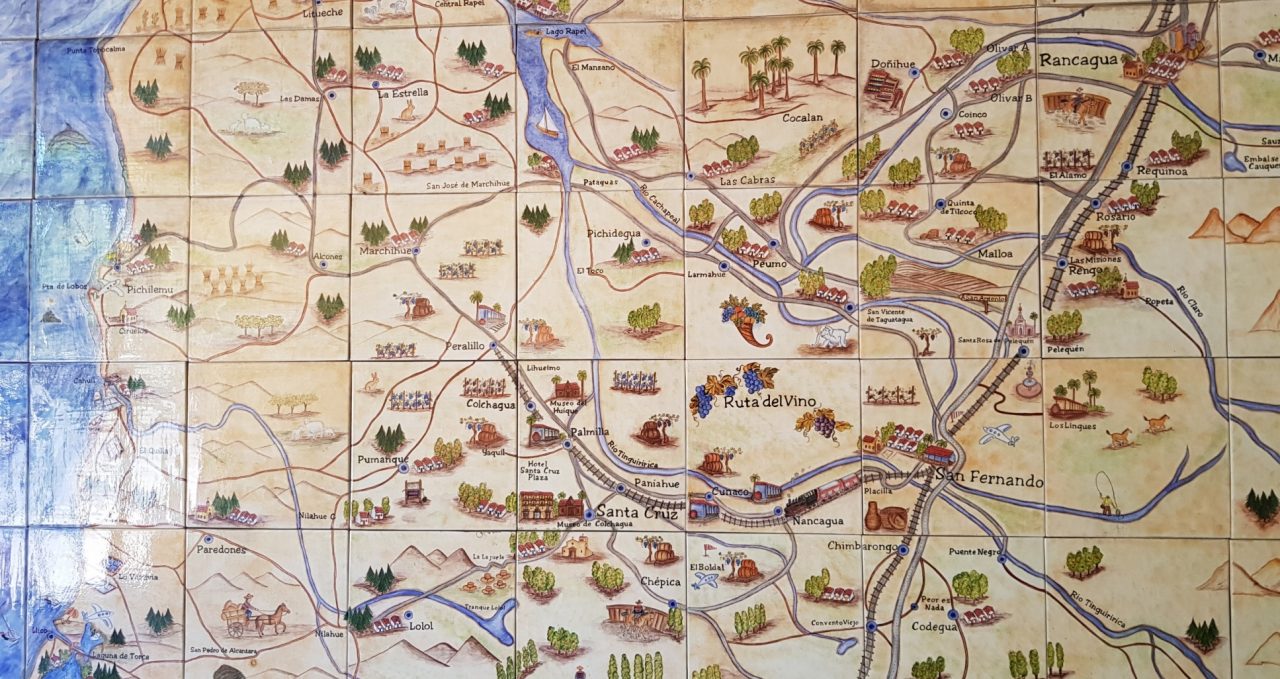
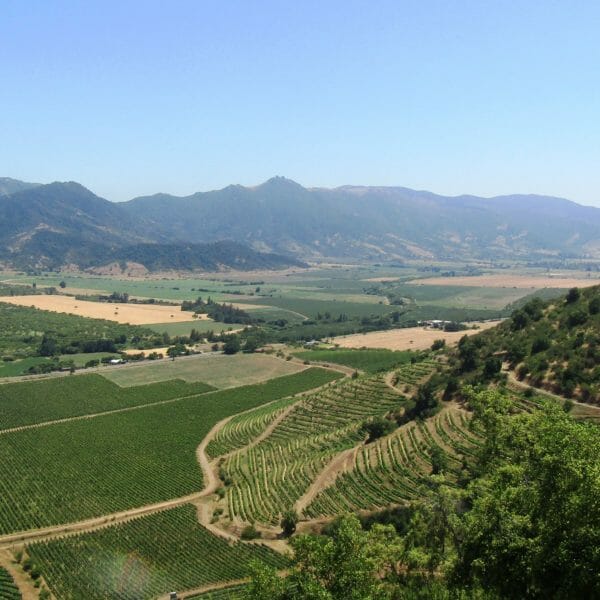
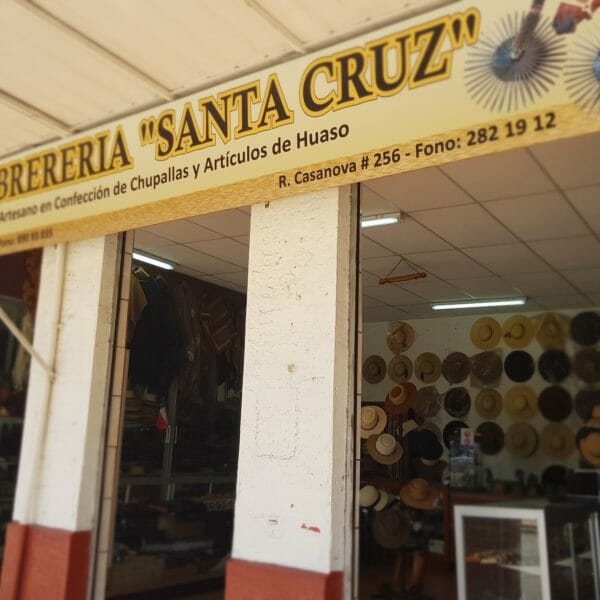
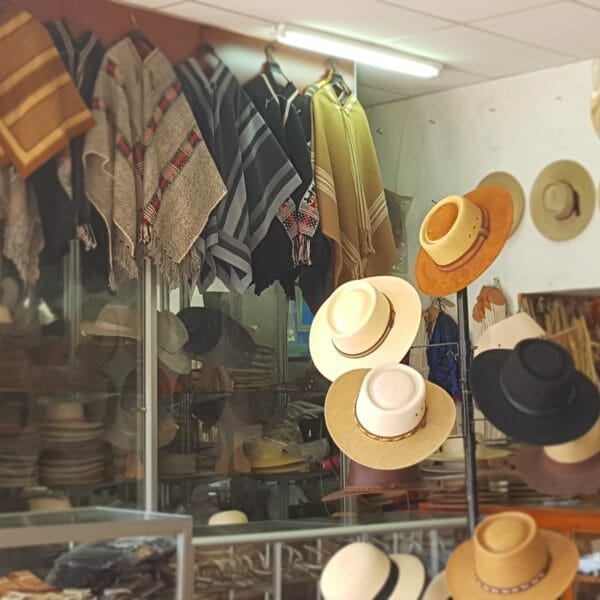
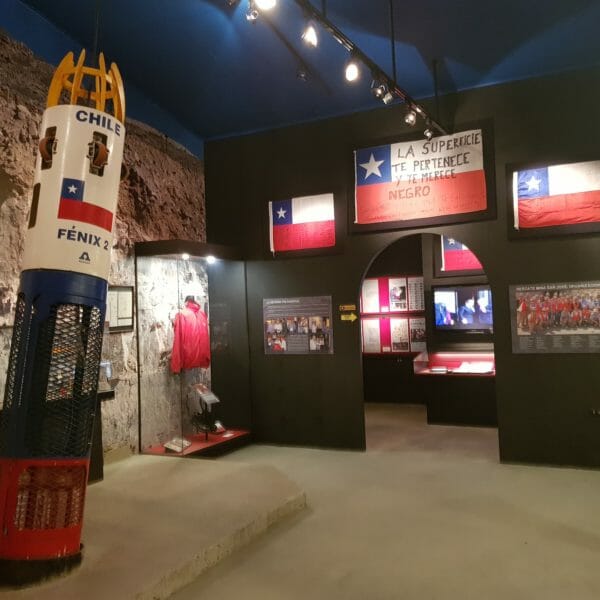
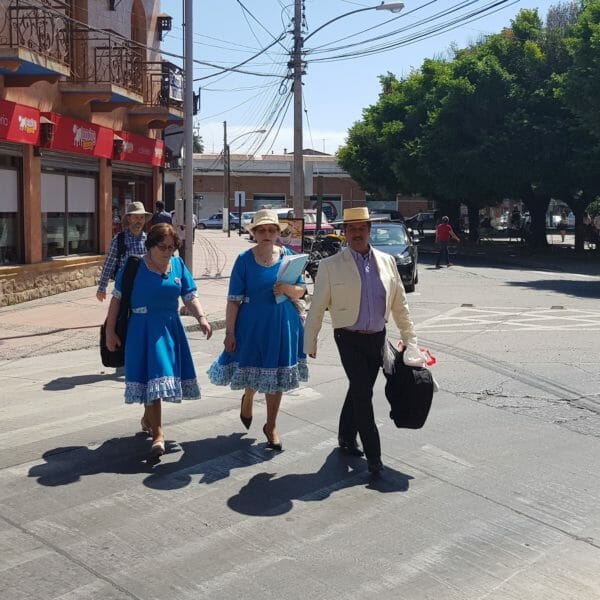
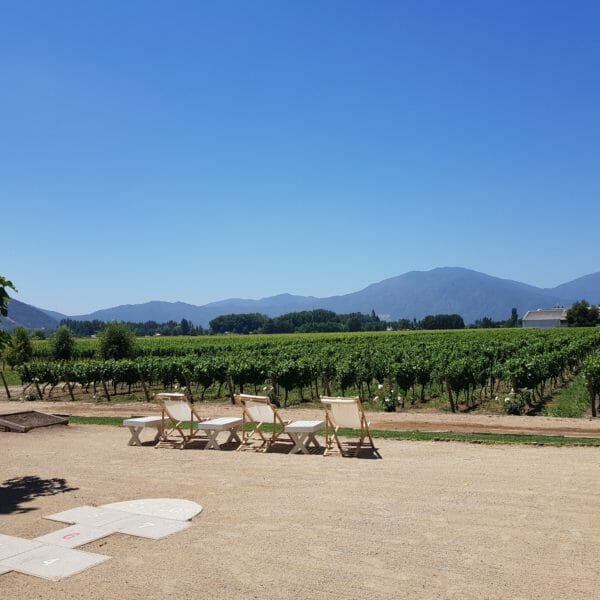
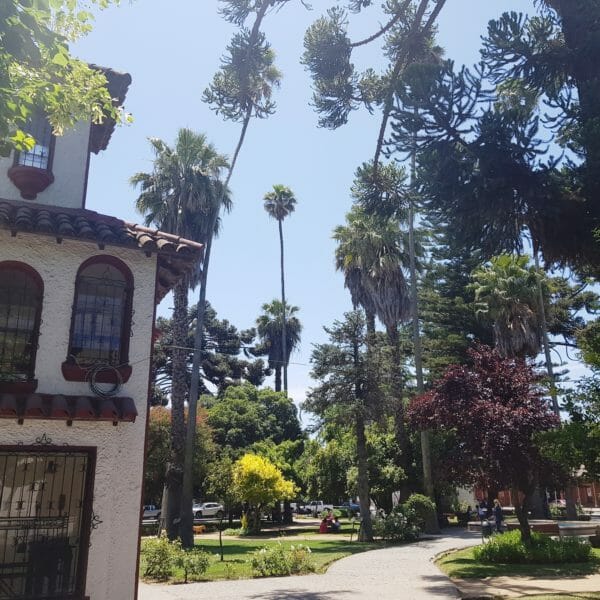
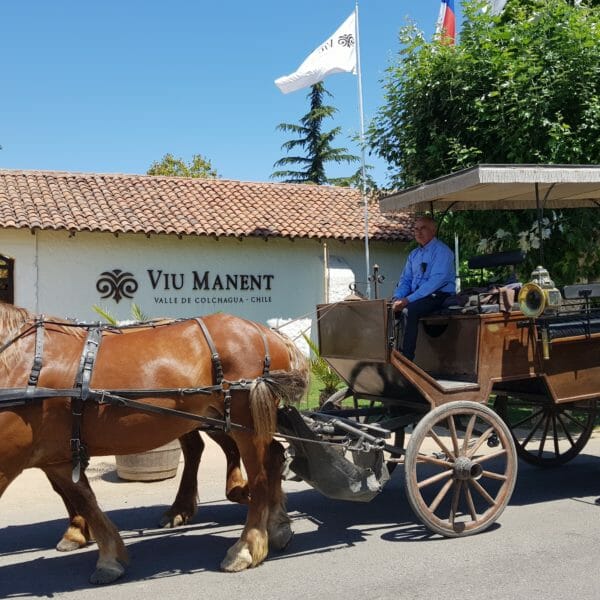
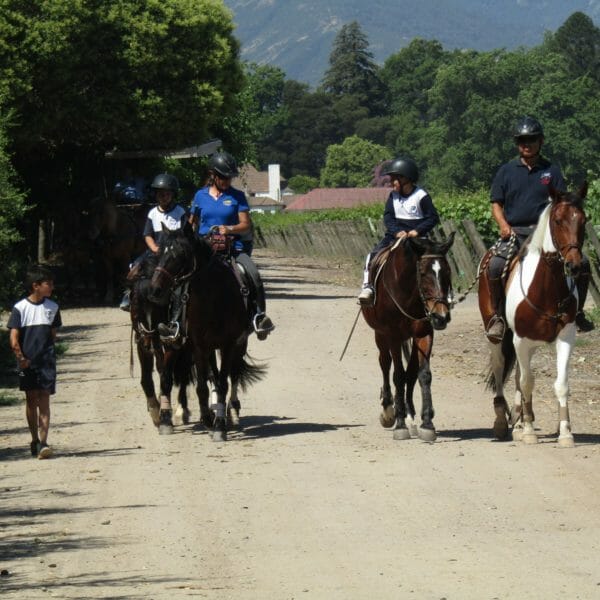
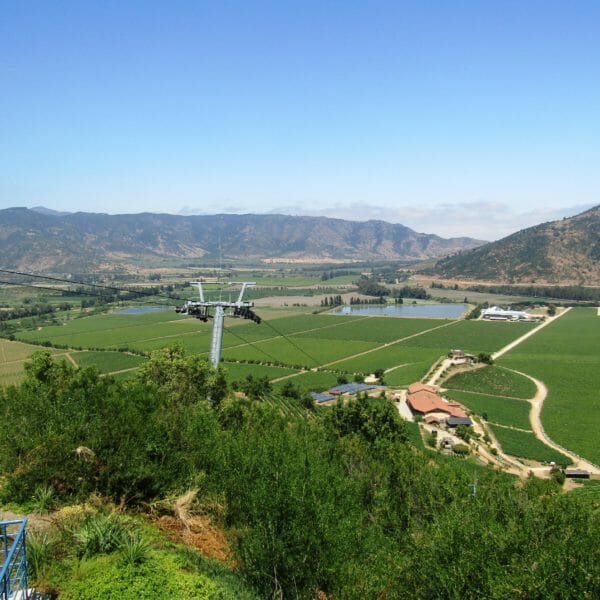
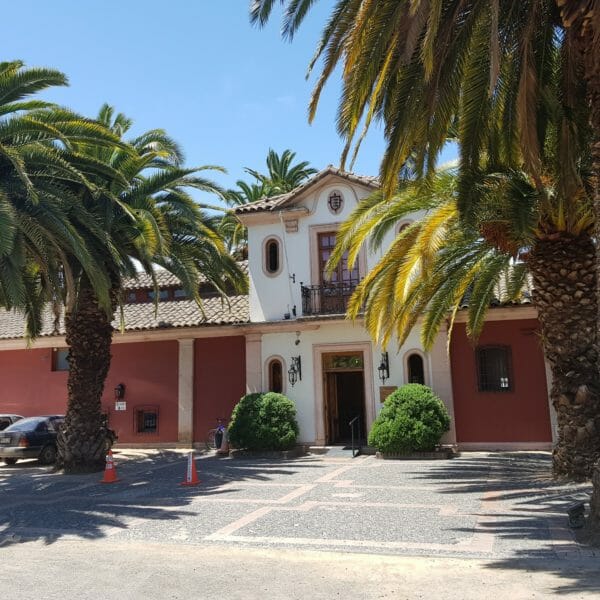
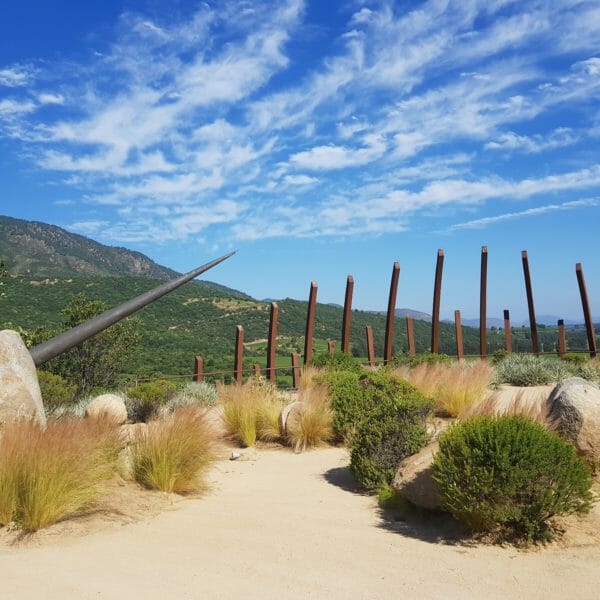
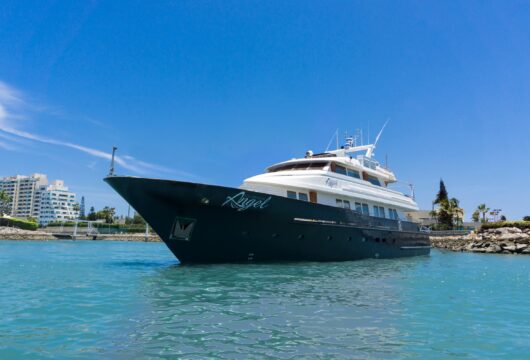
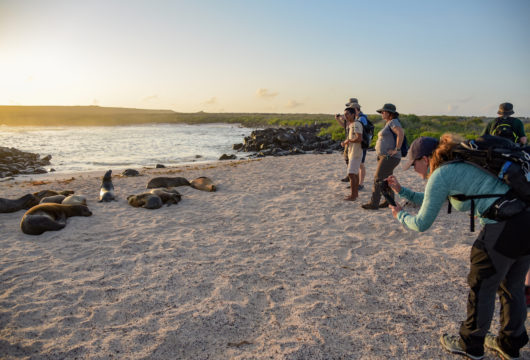
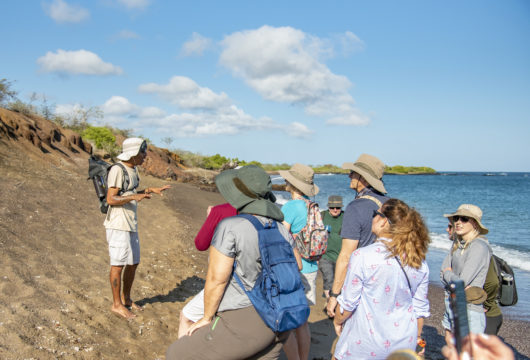
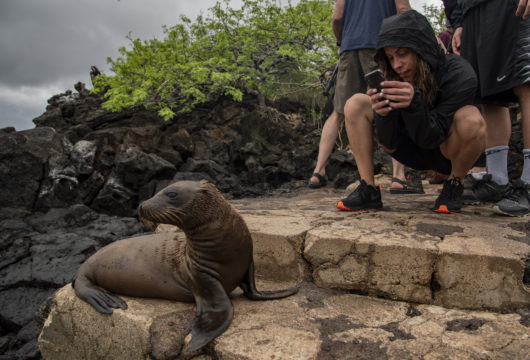
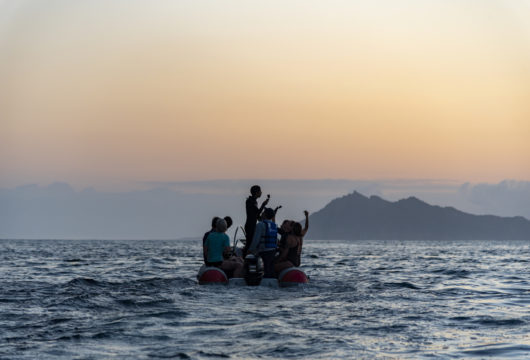
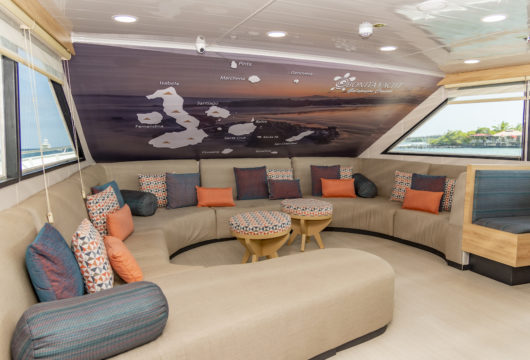
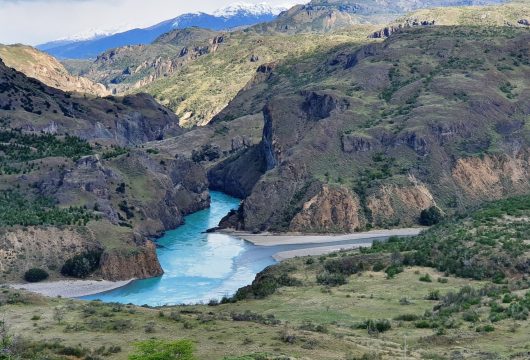
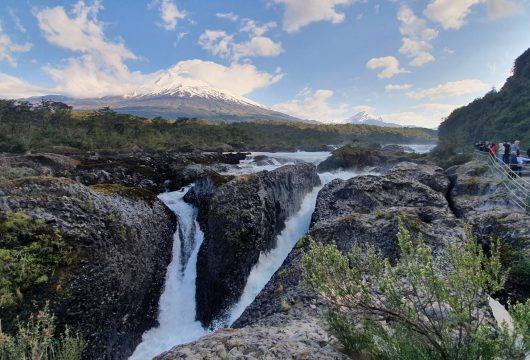
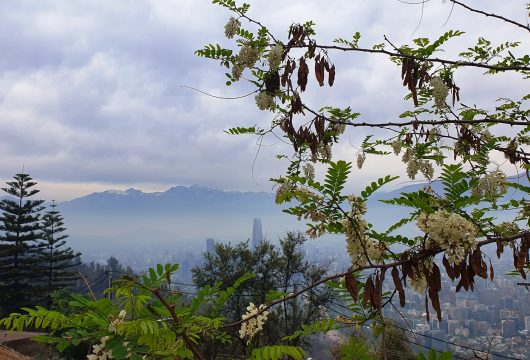
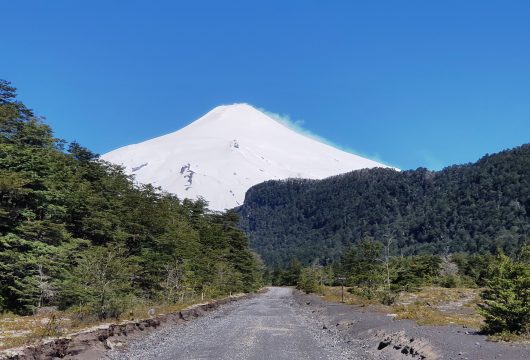
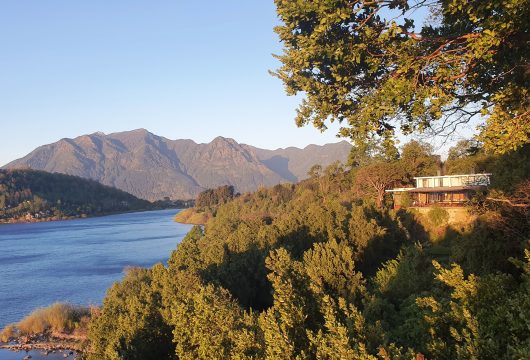
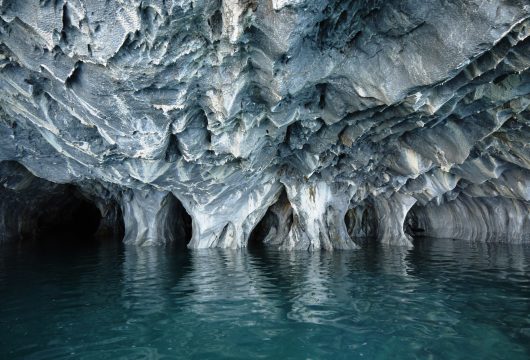
 a Group Tour
a Group Tour
 a Tailor Made Tour
a Tailor Made Tour
